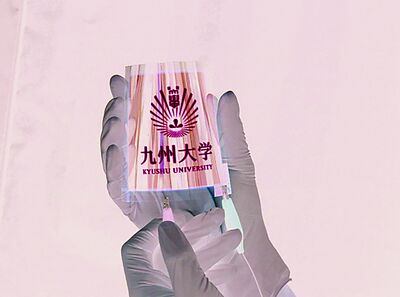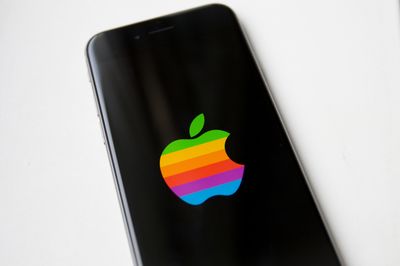The iPhone’s success has transformed the fortunes of dozens of suppliers, from glass manufacturers to the maker of robots that cut metal cases.
Now, as Apple Inc. prepares to introduce a new smartphone with an OLED screen, a Japanese refiner better known for its chain of gas stations is about to join the list.

Apple’s OLED iPhone expected this year will carry a Samsung screen.
Wider adoption of the advanced displays, which offer crisper images and use less battery power, is putting the spotlight on Japanese suppliers that up until now had virtually no stake in iPhone sales. Canon Tokki Corp., for example, has a near monopoly on the giant vacuum machines capable of making OLED screens. Dai Nippon Printing Co. and Toppan Printing Co. are leading manufacturers of fine metal meshes needed to imprint OLED pixels.
“Samsung has been using OLED screens for a few years, but with Apple it becomes a big push,” said Alberto Moel, a technology analyst at Sanford C. Bernstein & Co. “It makes everyone else want to do the same thing.”
Apple plans to ship at least one new iPhone with an OLED screen this year, the 10th anniversary of the product’s debut, people with knowledge of the matter have said. The Cupertino, California-based company’s use of OLED displays will boost demand by hundreds of millions of units, according to industry estimates. IHS Markit forecasts they will overtake liquid-crystal displays for smartphone panels this year in a market expected to reach $22.7 billion in 2017.
Idemitsu’s unlikely role in OLED technology stems from its early research in blue diodes, which don’t last as long but are critical for offering a full range of colors on displays. Blue light has a higher frequency than red and green, packing enough energy to cut chemical bonds.
OLEDs have held out the promise of better screens for decades even as LCDs ruled. OLED displays can be thinner, more energy efficient and produce deeper black colors because organic pixels can glow on their own, while LCDs require a backlit panel. They can also be made on flexible plastic for a wider variety of shapes and applications. The challenge has been in creating long-lasting, bright screens at low enough prices.
When Idemitsu began development in 1985, OLED was little more than a promising science. For a decade, Japan’s second-largest refiner struggled to make materials that lasted more than a few seconds, until a breakthrough that extended longevity. That allowed Pioneer Corp. to include the world’s first commercial OLED display for a car stereo in 1999.
“We were there from the beginning,” said Yuichiro Kawamura, chief researcher at Idemitsu’s electronic materials development center.
More advancements followed, but it took massive investments by South Korean screen manufacturers to produce displays that were price competitive with LCDs. Samsung bet its smartphone future on OLED and currently makes the vast majority of small displays. LG Electronics Inc. forged an alliance with Idemitsu in 2009 and focused on TV panels.
“We have had all the key patents for 10 years,” said Takamitsu Nagase, general manager in charge of business strategy at Idemitsu’s electronic-materials department. “But it’s only in the past three or four years that it has become a real business.”
While Idemitsu took an early lead in developing OLED technology, Dow Chemical Co., Merck KGaA and other rivals have joined the fray, pouring money into research to find a better way to produce organic materials.
Idemitsu shares closed unchanged at 3,480 yen in Tokyo. The stock has gained 7.6 percent this year compared with a 3.3 percent decline in the Topix index.

A flexible display made with OLED technology.
Universal Display Corp., which was founded by a former Princeton University professor in 1994 and trades under the ticker OLED, commercialized a method of extracting more light from organic molecules. The process, which involves the use of iridium, a rare-earth metal, helped UDC become one of the industry’s leading suppliers. Others aren’t convinced that the use of heavy elements offers room for technological improvement.
“Once you add iridium, you introduce restrictions and lose that wonderful Lego-like ability to form shapes,” said Chihaya Adachi, director of Center for Organic Photonics and Electronic Research at Kyushu University.
Adachi and his researchers are able to create carbon compounds that never existed before, in as little as a week. That lets them rapidly produce and test tiny OLED square samples for brightness and longevity before going back to the drawing board.
In 2012, this approach yielded a breakthrough that promises much lower costs and power consumption, and OLEDs with purer colors. Idemitsu says the technique, called thermally activated delayed fluorescence (TADF), could threaten its blue diode patents and would be even more damaging to UDC’s position.
The incumbents, Idemitsu and UDC, aren’t standing still either. The refiner has been working on its own TADF technology since 2013 and opened a research center in Switzerland in January. Last year, UDC paid 87 million euros ($93 million) for the entire OLED patent portfolio of BASF SE.
“The science behind blue TADF will be solved this year,” said Adachi, who is also a co-founder of Kyulux Inc., a company created to commercialize the technology. “The next step is solving the mass production issue.”
(An earlier version of this story corrected which Merck company was involved in OLED supplies.)















